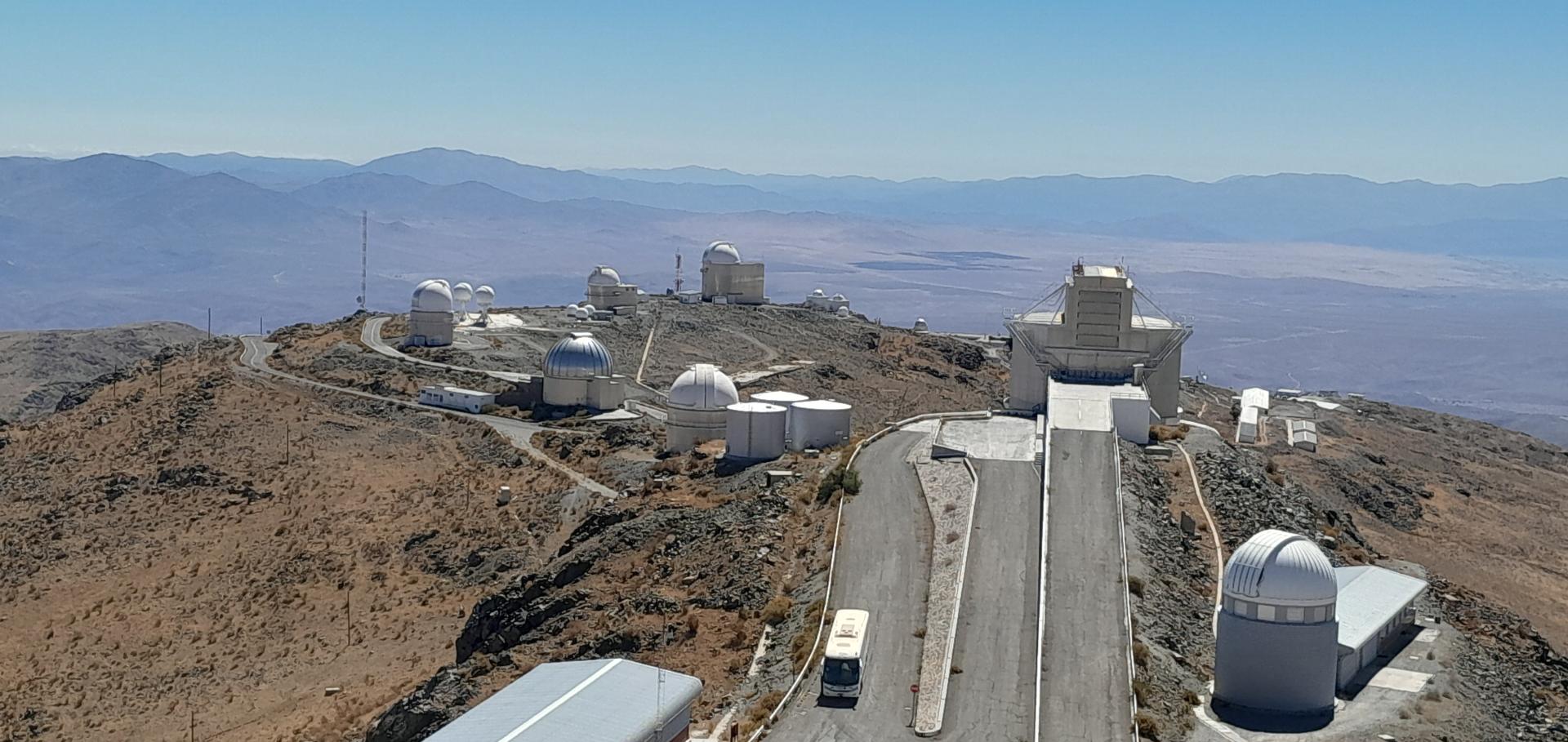Magnetic field evolution of the K2 dwarf V471 Tau
Monthly notices of the Royal Astronomical Society, 513, 2893
Abstract:
Observations of the eclipsing binary system V471 Tau show that the time of the primary eclipses varies in an apparent periodic way. With growing evidence that the magnetically active K2 dwarf component might be responsible for driving the eclipse timing variations (ETVs), it is necessary to monitor the star throughout the predicted ~35 yr activity cycle that putatively fuels the observed ETVs. We contribute to this goal with this paper by analysing spectropolarimetric data obtained with ESPaDOnS at the Canada-France-Hawaii Telescope in 2014 December and 2015 January. Using Zeeman-Doppler Imaging, we reconstruct the distribution of brightness inhomogeneities and large-scale magnetic field at the surface of the K2 dwarf. Compared to previous tomographic reconstructions of the star carried out with the same code, we probe a new phase of the ETVs cycle, offering new constraints for future works exploring whether a magnetic mechanism operating in the K2 dwarf star is indeed able to induce the observed ETVs of V471 Tau.
The young HD 73583 (TOI-560) planetary system: two 10-M⊕ mini-Neptunes transiting a 500-Myr-old, bright, and active K dwarf
Monthly Notices of the Royal Astronomical Society, Volume 514, Issue 2, pp.1606-1627
Abstract:
One year of AU Mic with HARPS - II. Stellar activity and star-planet interaction
Monthly notices of the Royal Astronomical Society, 512, 5067
Abstract:
We present a spectroscopic analysis of a 1-yr intensive monitoring campaign of the 22-Myr old planet-hosting M dwarf AU Mic using the HARPS spectrograph. In a companion paper, we reported detections of the planet radial velocity (RV) signatures of the two close-in transiting planets of the system, with respective semi-amplitudes of 5.8 ± 2.5 and 8.5 ± 2.5 m s-1 for AU Mic b and AU Mic c. Here, we perform an independent measurement of the RV semi-amplitude of AU Mic c using Doppler imaging to simultaneously model the activity-induced distortions and the planet-induced shifts in the line profiles. The resulting semi-amplitude of 13.3 ± 4.1 m s-1 for AU Mic c reinforces the idea that the planet features a surprisingly large inner density, in tension with current standard models of core accretion. Our brightness maps feature significantly higher spot coverage and lower level of differential rotation than the brightness maps obtained in late 2019 with the SPIRou spectropolarimeter, suggesting that the stellar magnetic activity has evolved dramatically over a ~1-yr time span. Additionally, we report a 3σ detection of a modulation at 8.33 ± 0.04 d of the He I D3 (5875.62 Å) emission flux, close to the 8.46-d orbital period of AU Mic b. The power of this emission (a few 1017 W) is consistent with 3D magnetohydrodynamical simulations of the interaction between stellar wind and the close-in planet if the latter hosts a magnetic field of ~10 G. Spectropolarimetric observations of the star are needed to firmly elucidate the origin of the observed chromospheric variability.
One year of AU Mic with HARPS - I. Measuring the masses of the two transiting planets
Monthly Notices of the Royal Astronomical Society, Volume 512, Issue 2, pp.3060-3078
Abstract:
The system of two transiting Neptune-sized planets around the bright, young M-dwarf AU Mic provides a unique opportunity to test models of planet formation, early evolution, and star-planet interaction. However, the intense magnetic activity of the host star makes measuring the masses of the planets via the radial velocity (RV) method very challenging. We report on a 1-yr, intensive monitoring campaign of the system using 91 observations with the HARPS spectrograph, allowing for detailed modelling of the ~600 ms−1 peak-to-peak activity-induced RV variations. We used a multidimensional Gaussian Process framework to model these and the planetary signals simultaneously. We detect the latter with semi-amplitudes of Kb = 5.8 ± 2.5 ms−1 and Kc = 8.5 ± 2.5 ms−1, respectively. The resulting mass estimates, Mb = 11.7 ± 5.0 M⊕ and Mc = 22.2 ± 6.7 M⊕, suggest that planet b might be less dense, and planet c considerably denser than previously thought. These results are in tension with the current standard models of core-accretion. They suggest that both planets accreted a H/He envelope that is smaller than expected, and the trend between the two planets' envelope fractions is the opposite of what is predicted by theory.
Magnetic field and activity phenomena of the K2 dwarf V471 Tau
Monthly Notices of the Royal Astronomical Society, in press
Abstract:
We analyze spectropolarimetric data of the pre-cataclysmic variable binary system V471 Tau obtained with ESPaDOnS at the Canada-France-Hawaii Telescope in two observational campaigns (in Nov/Dec 2004 and Dec 2005). Using Zeeman-Doppler Imaging, we reconstruct the distribution of brightness map and large-scale magnetic field of the K2 dwarf at both epochs, as well as the amount of differential rotation by which surface maps are sheared. We detect significant fluctuations in the surface shear between the two campaigns. It goes from about twice the solar differential rotation rate to less than the solar value in a one-year interval. We conclude that the differential rotation fluctuations obtained for the K2 dwarf resemble those detected on the single-star analog AB Dor, although even larger amplitudes of variation are seen in the K2 dwarf of V471 Tau. Finally, we show that the differential rotation results obtained in this work do not favor an Applegate mechanism operating in the V471 Tau system, at least in its standard form, but leave room for explaining the observed orbital period fluctuations with exotic forms of similar phenomena based on dynamo processes operating within the convective zone of the K2 star.


